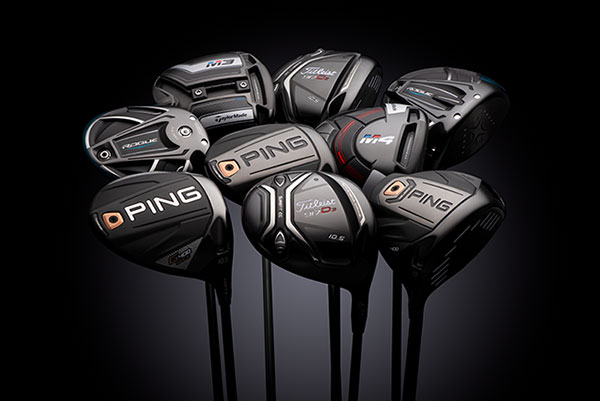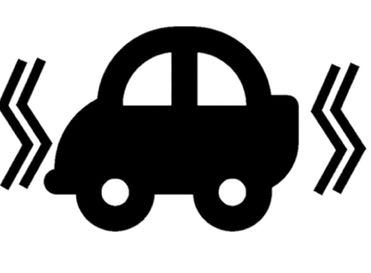How Long Do Golf Drivers Last

Golf drivers are the ultimate powerhouses on the golf course, capable of launching the ball off the tee with tremendous speed and distance. As golfers, we rely on these remarkable clubs to set the stage for success and exhilaration on each hole. But amidst the thrill and anticipation, a common question arises: How long can a golf driver last?
Understanding the lifespan of a golf driver is essential for golfers of all levels. Whether you’re a seasoned player or a novice just getting started, knowing the durability and longevity of your driver can help you make informed decisions about maintenance, upgrades, and replacements.
In this comprehensive guide, we delve into the intriguing world of golf driver lifespan. We explore the factors that influence how long a driver can endure, from the quality of materials used to its frequency and intensity of use. We discuss the signs of wear and deterioration to watch out for, along with practical maintenance tips to prolong the lifespan of your driver.
So, whether you’re curious about the lifespan of your current driver or considering a new addition to your bag, this guide will provide valuable insights and empower you to make informed choices regarding one of the most crucial clubs in your arsenal.
Get ready to embark on a journey of discovery as we uncover the secrets of how long golf drivers last and equip you with the knowledge to optimize your performance and enjoyment on the golf course.

Factors Influencing the Lifespan of Golf Drivers
The lifespan of a golf driver is influenced by various factors that can significantly impact its durability and longevity. Understanding these factors can help you make informed decisions about the care and maintenance of your driver, as well as determine when it may be time for a replacement.
Material Quality and Durability
The quality of materials used in the construction of a golf driver plays a crucial role in its lifespan. High-quality materials are often more durable and better equipped to withstand the rigors of regular use.
When it comes to driver heads, there are several common materials used, each with its own attributes:
| Material | Description |
|---|---|
| Titanium | Known for its strength, lightness, and ability to flex |
| Carbon Fiber | Offers a lightweight construction and increased energy transfer |
| Composite | Combines different materials to optimize performance |
Titanium is a popular choice due to its excellent strength-to-weight ratio, which allows for larger clubface designs and forgiveness. Carbon fiber and composite materials, on the other hand, provide opportunities for weight savings and improved energy transfer, resulting in enhanced distance and performance.
Frequency and Intensity of Use
The frequency and intensity of use can significantly impact the lifespan of a golf driver. Frequent and intense usage subjects the club to more stress, increasing the likelihood of wear and potential performance degradation over time.
Consider two golfers: one who plays several rounds a week and another who plays once a month. The golfer who plays more frequently will naturally put more strain on their driver. Additionally, golfers with faster swing speeds or aggressive swings may exert more force on the clubhead, shaft, and grip, which can accelerate wear and potential damage.
It’s important to be mindful of your playing habits and swing characteristics to gauge the expected lifespan of your driver. Those who play and practice extensively may need to replace their driver more often than occasional players.
Signs of Wear and Tear: Identifying When to Replace Golf Drivers
Over time, golf drivers experience natural wear and tear due to regular use and exposure to the elements. Recognizing the signs of aging and deterioration can help you determine when it’s time to replace your driver.
Common Signs of Aging in Golf Drivers
Visual cues can provide valuable insights into the condition of your driver. Look out for the following signs of wear and tear:
- Worn clubface: The clubface may develop visible signs of wear, such as scratches, dings, or worn grooves. These imperfections can affect the driver’s ability to generate optimal spin and control the ball’s trajectory.
- Shaft damage: Inspect the shaft for any signs of cracks, splintering, or bending. Damaged shafts can affect the driver’s performance and consistency. Look for any abnormalities in the shaft’s appearance or feel.
- Grip wear: The grip of your driver is subject to regular use and can wear out over time. Check for signs of wear such as smooth spots, cracks, or loss of tackiness. A worn-out grip can affect your grip pressure and control during swings.
Performance Issues
In addition to visual indications, performance issues can also indicate the need for a new driver. Pay attention to the following:
- Loss of distance: If you notice a significant decrease in your driving distance compared to your previous shots, it may be a sign of wear or loss of performance in your driver. The clubface may have worn out, resulting in reduced ball speed and distance.
- Inconsistent ball flight: Uneven ball flight, such as hooks, slices, or excessive fade/draw, can indicate issues with the clubface, shaft, or grip. It may be a sign that your driver needs attention or replacement.
- Lack of responsiveness: If you feel a lack of responsiveness or a “dead” sensation when making contact with the ball, it could be a result of a worn-out clubface or diminished shaft performance. This can impact the feel and feedback you get from your shots.
It’s important to pay attention to these performance issues and assess whether they are consistent or occasional. Addressing them promptly can help maintain optimal performance on the course.
When Should a Golf Driver be Replaced?
Determining the right time to replace your golf driver depends on a combination of factors, including the extent of wear and damage, technological advancements, and personal preferences.
Extent of Wear and Damage
Assessing the overall condition of your driver is crucial in determining whether it needs replacement. Consider the following:
- Clubface wear: Evaluate the severity of wear on the clubface, such as worn grooves or deep scratches. If the clubface shows significant signs of wear that affect its performance, it may be time to consider a new driver.
- Shaft damage: Check for any cracks, splintering, or bends in the shaft. While minor cosmetic issues may not affect performance, significant damage can compromise the structural integrity and responsiveness of the driver.
- Grip condition: Assess the condition of the grip, including wear, smooth spots, or loss of tackiness. A worn-out grip can affect your grip stability and swing control.
If the wear and damage are extensive and impacting the performance of your driver, it’s likely time for a replacement.
Technological Advancements
Technological advancements in driver design and construction can lead to significant improvements in performance. Newer drivers often feature innovative technologies such as adjustable weights, aerodynamic enhancements, or improved clubface materials.
Consider whether the technology in your current driver is outdated compared to newer models. If newer drivers offer substantial performance enhancements and align with your playing style, it may be worth considering an upgrade.
Personal Preferences and Confidence
Personal preferences and confidence in your equipment play a crucial role in your overall performance. If you find yourself lacking confidence in your driver, it may be worth exploring other options that provide a better fit for your swing and inspire confidence off the tee.
Remember, golf equipment is constantly evolving, and finding the right driver that suits your game can enhance your overall experience and performance on the course.
Maintenance and Care: Extending the Lifespan of Golf Drivers
Proper maintenance and care can significantly extend the lifespan of your golf driver, ensuring consistent performance and durability over time.
Cleaning and Protection
Regular cleaning and protection of your driver can help maintain its performance and appearance. Follow these guidelines:
- Clubface cleaning: After each round, use a soft cloth or brush to remove dirt, grass, and debris from the clubface. Pay close attention to the grooves, as debris can affect spin and control. Wipe the clubface with a damp cloth and dry it thoroughly to prevent moisture-related issues.
- Shaft maintenance: Regularly inspect the shaft for any signs of dirt or residue. Use a soft cloth or brush to clean the shaft, paying attention to the grip area and the connection with the clubhead. Avoid using harsh chemicals or abrasive materials that could damage the finish or graphics on the shaft.
- Grip care: Clean the grip regularly to maintain its tackiness and prevent slippage. Use mild soap and water to gently scrub the grip with a brush or cloth. Rinse it thoroughly and dry it completely before storing.
Storage and Protection
Proper storage and protection are essential to safeguard your golf driver when it’s not in use. Follow these practices:
- Headcovers: Use headcovers to protect the clubhead from scratches, dings, and other potential damage during transportation or storage. Headcovers come in various designs and materials, providing an extra layer of protection.
- Golf bag organization: Store your golf driver in a golf bag with individual compartments to prevent it from knocking against other clubs. Ensure that the clubhead is facing upward to avoid unnecessary strain on the shaft.
- Climate control: Avoid extreme temperature and humidity conditions, as they can potentially damage the materials of your golf driver. Store it in a cool, dry place to maintain its integrity.
Professional Maintenance
Periodic professional maintenance and inspections can help identify potential issues and ensure that your golf driver is performing optimally. Consider the following:
- Club fittings: Schedule a professional club fitting to assess your swing characteristics and ensure that your driver is properly fitted to your specifications. This can enhance both performance and longevity.
- Club repairs: If you notice any significant damage or issues with your driver, consult a professional club repair specialist. They can provide expert advice and perform necessary repairs to restore your driver’s functionality.
By implementing proper maintenance and care routines, you can extend the lifespan of your golf driver, ensuring that it performs at its best for longer periods of time.
Conclusion
Understanding the lifespan of a golf driver is essential for maximizing its performance and longevity. Factors such as material quality, frequency and intensity of use, signs of wear and tear, and proper maintenance all contribute to the overall durability and lifespan of your driver.
Regular inspections, prompt replacement when necessary, and adherence to maintenance and care practices will ensure that your golf driver remains a reliable and effective tool in your game. By investing time and effort into its upkeep, you can enjoy consistent performance and confidence off the tee, helping you achieve your best shots on the course.





